
Women and Work
Drawing on records created in 1924 for the Special Committee to
Enquire into the Employment of Married Women, this exhibit looks
at women and work in the City of Winnipeg after World War I.
Canadian women have worked hard to define their place in society. Among the many changes that have occurred over the years is a shift in attitudes toward married women working outside the home.
In the City of Winnipeg, the number and marital status of women in the workforce has periodically come under fire. The issue was brought to City Council’s attention by T. Brown![]() in 1919 as World War I drew to a close and finding jobs for returning soldiers was a major concern.
in 1919 as World War I drew to a close and finding jobs for returning soldiers was a major concern.

Colour Postcard, Portage Avenue, Winnipeg MB – with T. Eaton Co. Ltd. on the right, circa 1915 (P6 File 69) |
Later in 1919, the Finance Committee required City Departments to identify positions held by married women "who are not entirely dependent on their own earnings for their support, which can be satisfactorily filled by returned soldiers."
While the intent was to dismiss any woman found to be working for "pin"A small amount of extra money that a person earns to buy things they want but do not need.
X Close money, the survey showed that most of the women employed by the City were in fact the main source of support for their families – and none so identified were dismissed.
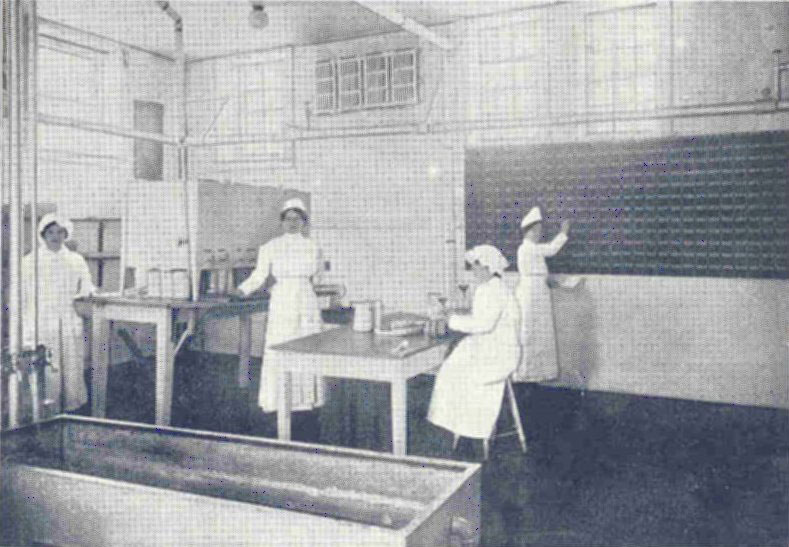
Staff in the Dispensary, Babies Milk Depot, Department of Public Health, City of Winnipeg, 1916. (A712 Volume 4) |
A few years later, four aldermen – E. T. Leech, J. Simpkin, T. Boyd and T. Flye – were appointed to a Special CommitteeThe City of Winnipeg was incorporated in 1873 by a charter granted by the legislature of Manitoba. At incorporation, the City established a committee system of government - while Council was the governing body for the City, it was in committee that civic policies were formed and executed. The initial task for the first and all subsequent newly-elected Councils was to strike standing committees for the Council year. In addition to standing committees, Council established special committees to investigate and manage various projects, issues and questions placed before the City. Special committees were typically struck by a Council motion that outlined committee composition and responsibilities and were dissolved once the issue was resolved.
At the July 14, 1924 Council meeting, the following Motion was moved by Alderman Flye, seconded by Alderman Simkin:
That the Council appoint a committee composed of Aldermen Leech, Simpkin, Boyd and Flye to enquire into the employment by the City of married women who are not dependent on their position for a livelihood, also to take up the question of employees who are not residents of the City. Carried.
X Close to enquire into the Employment of Married Women, and to gather information on the residency of all City employees.
Once again, City Departments were instructed to prepare lists of "every employee and their residences, also a list of all married women and what their husbands are employed at".
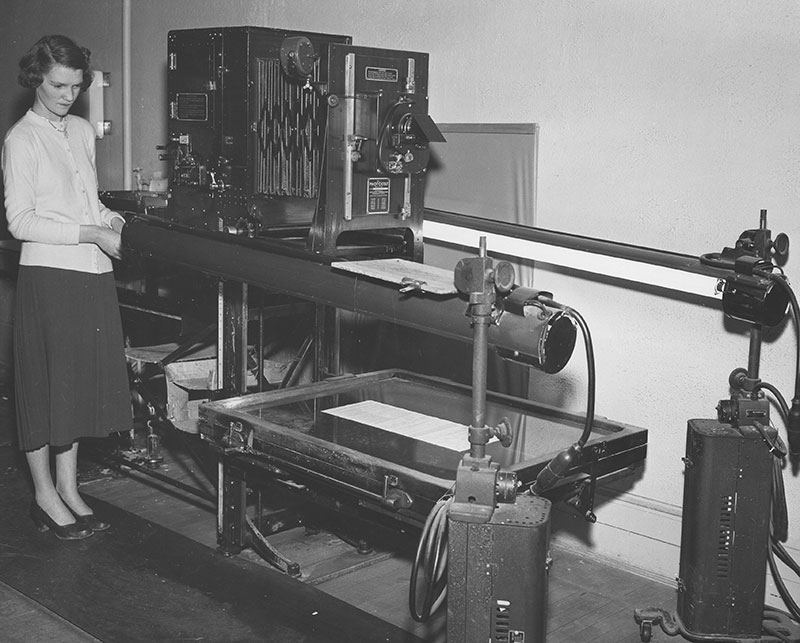
Photostat Camera and Operator, 1954 (A568 File 15 Item 6) |
Departmental reports for 1924 paint an interesting picture of employment with the City. For one thing, most of the women listed were employed by either the Public Library or the Health Department in municipal hospitals. Of note, only 14 of 1,932 employees listed were married women. In all cases, these women were either widows or responsible for the welfare of others – typically children, but also unemployed husbands or elderly parents.
While no special attention was focused on unmarried women, they were identified by the pronoun "Miss" or by spelling out in full their given names.

Holiday Reading Club Winners, Coronation Park Library, 1957 (P17 File 34) |
As for residency, 177 employees were living outside the City of Winnipeg.
Concerned for his position, the secretary of the Civic Charities Endorsement Bureau included a note in his report saying that he was prepared to sell his property and "move into the City, if it is so desired." He was living on Helmsdale Avenue in the City of East Kildonan.
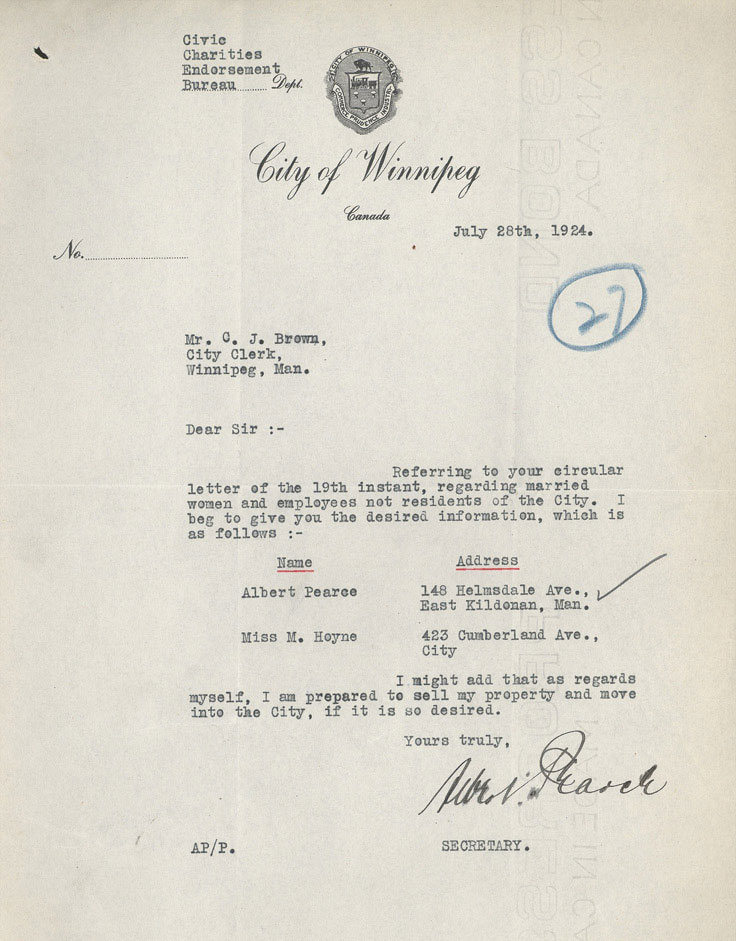
Civic Charities Endorsement Bureau report, Special Committee to Enquire into the Employment of Married Women, 1924 (A560 File 29) |
Following their review of staff lists, the Special Committee submitted a report On September 8, 1924, the Special Committee’s report was considered clause by clause and the following recommendations adopted:
1. That Council adopt the policy of not employing married women who are not dependent on their positions for a living, and that the several Committees be instructed to act accordingly, if upon investigation it is found that circumstances justify the same.
2. That Council adopt the policy of not engaging, from this date, any help residing outside the City except those whose work necessitates their residing outside the City, and that in future any employee of the City taking up residence out of the City will thereby forfeit his position.
X Close to Council recommending that the City adopt a policy of not engaging married women if they were not dependent on their work to manage their affairs, and of not engaging anyone who lived outside the City of Winnipeg. Their recommendations were adopted by Council in September of 1924.
Though it was an official City policy, departmental administrators were not inclined to investigate the personal circumstances of women already in their employ. When the issue was raised at a public meeting, Alderman Simpkin and Alderman Leanard were named to a committee to investigate questionable cases. No report was ever tabledPlaced on an agenda for discussion.
X Close.
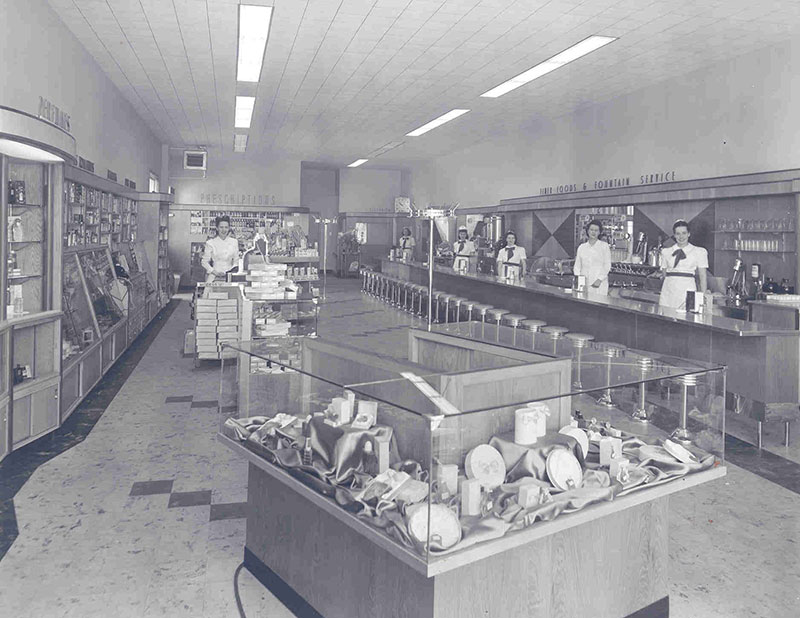
Karr’s Drug Store, Furby and Portage, 1951 (P2 File 28) |
For years after the City adopted the policy to bar married women from employment, married women in the workplace remained a contentious issue. When jobs were scarce, the argument against hiring married women focused on the equitable distribution of employment opportunities – the idea being that only one person per household ought to be earning a wage. In fact, single woman employed by the City were expected to give up their positions when they married. In addition to the notion of equity, married women had to contend with the prevailing attitudeCanadian Women, The Royal Bank of Canada, July, 1946. Finance Committee, City of Winnipeg (File 8729). Married women working outside the home form a comparatively small group, but it is the centre of never-ending controversy. Grace L. Coyle, of Columbia University, said in an article in the Annals of the American Academy of Political and Social Science some years ago: "Unmarried women in the offices regard them as unfair competitors who should leave the field to the girl who has no other support." A director of women personnel was quite definite in stating that married women cannot be depended upon in the same way as unmarried workers. They are more independent in their attitudes, less friendly with their fellow workers, more quick to show strain, and less punctual. It is, therefore, possible that what a married woman worker thinks of as discrimination because of her marriage is really her inability to hold a job due to softening of her keenness, closed personality, or other cause affecting her work.
X Close that their attention was elsewhere and that the workplace suffered because of their lack of focus.

Dominion Bridge Co., munitions retooling, World War II, circa 1940 (P9 File 39) |
Regardless of the obstacles, the participation rate for women in the workforce increased dramatically after World War II. Acknowledging this changing dynamic, Council amended its policyCouncil Minutes, May 25, 1953, Minute 694. Motions of Which Notice Has Been Given. Moved by Alderman McCreery, Seconded by Alderman McKelvey, That the Regulations and Procedure for Staff Changes and Appointments contained in the report of the Committee on Personnel and Legislation as adopted by Council on February 21st, 1949, be amended by striking out item (7) of the said Regulations, which reads as follows: (7) Employment of a married woman will be permitted only by authority of the Committee on Personnel and Legislation. Carried.
X Close in 1953 to allow for the employment of married women by the City.
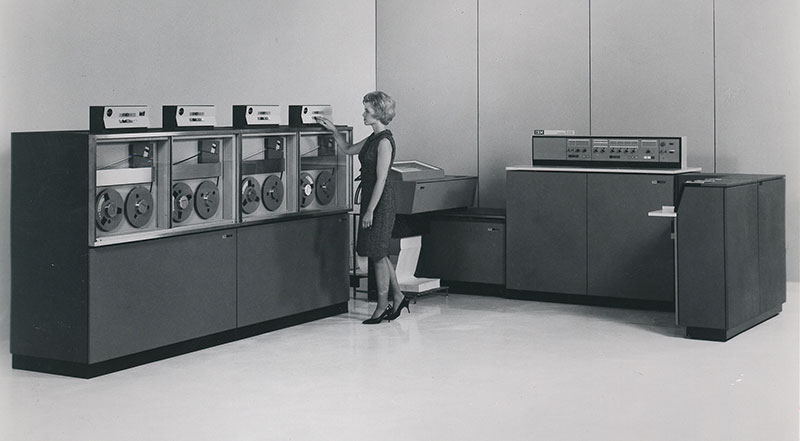
Computer Room, Sovereign Life Assurance Company, Winnipeg Head Office, circa 1960 (A568 File 15 Item 7) |



